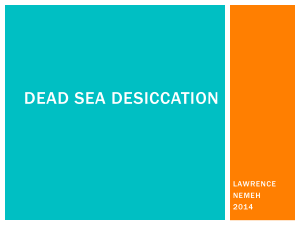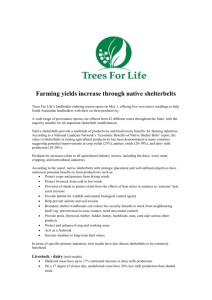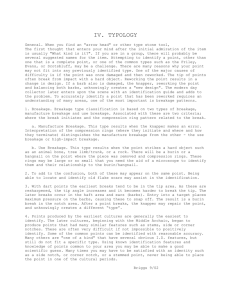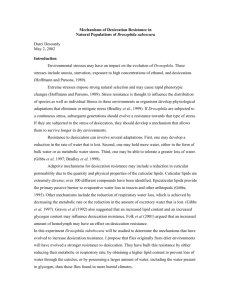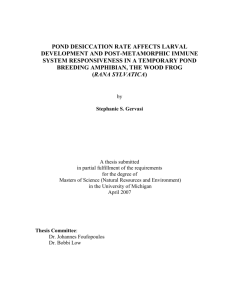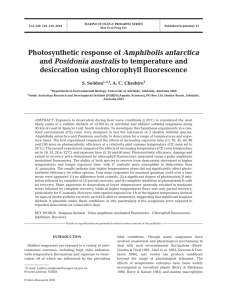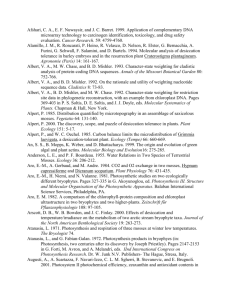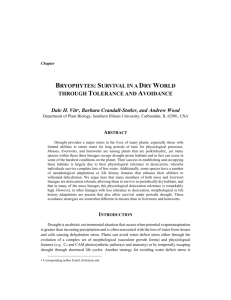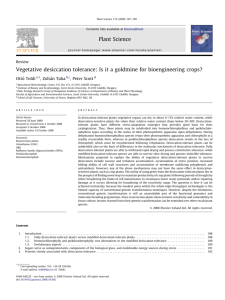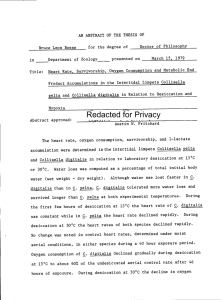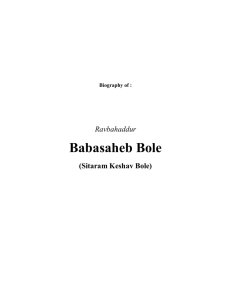II. E. Wind
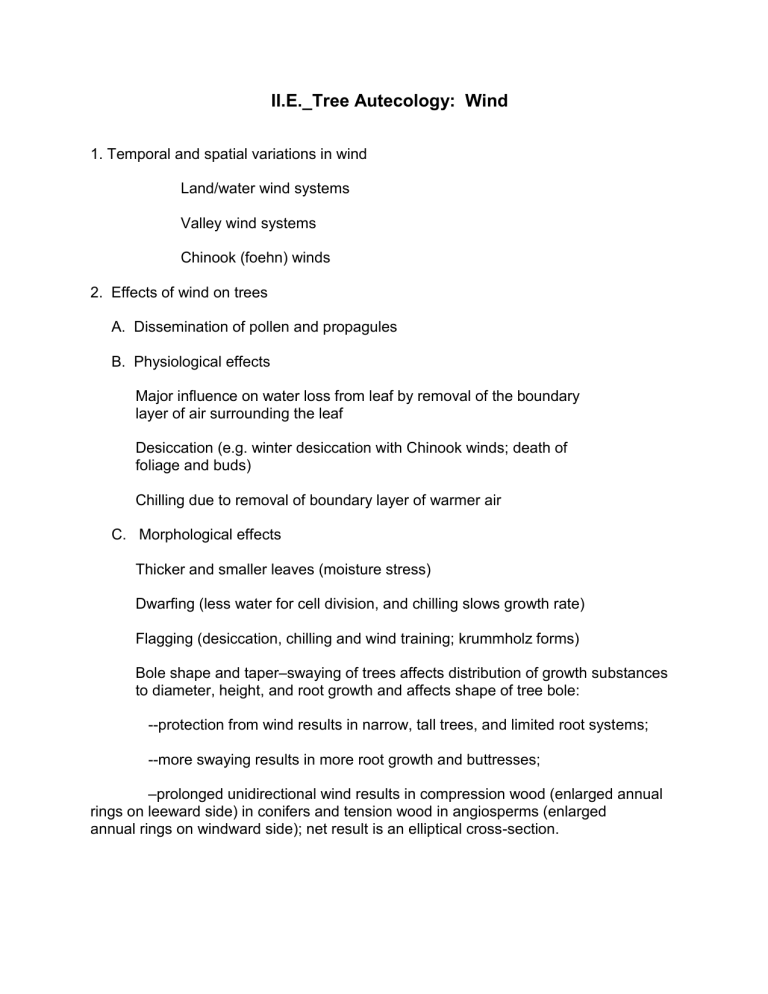
II.E._Tree Autecology: Wind
1. Temporal and spatial variations in wind
Land/water wind systems
Valley wind systems
Chinook (foehn) winds
2. Effects of wind on trees
A. Dissemination of pollen and propagules
B. Physiological effects
Major influence on water loss from leaf by removal of the boundary layer of air surrounding the leaf
Desiccation (e.g. winter desiccation with Chinook winds; death of foliage and buds)
Chilling due to removal of boundary layer of warmer air
C. Morphological effects
Thicker and smaller leaves (moisture stress)
Dwarfing (less water for cell division, and chilling slows growth rate)
Flagging (desiccation, chilling and wind training; krummholz forms)
Bole shape and taper –swaying of trees affects distribution of growth substances to diameter, height, and root growth and affects shape of tree bole:
--protection from wind results in narrow, tall trees, and limited root systems;
--more swaying results in more root growth and buttresses;
–prolonged unidirectional wind results in compression wood (enlarged annual rings on leeward side) in conifers and tension wood in angiosperms (enlarged annual rings on windward side); net result is an elliptical cross-section.
Effects of windborne materials: abrasion by ice and sand salt spray (can be toxic and contributes to desiccation)
D. Wind as a mechanical force
Wind tatter –breakage of small twigs, stripping and breaking of leaves; abrasion of branches against each other and other trees
Branch breakage (can create large canopy gaps)
Treefalls and their different modes: windsnap -- bole breakage (stembreak) at some height above the ground uprooting
leaning
-- wind throw, including uplift of the roots
or bending
– often the tree survives, but a gap is still created blowdown – windsnap and/or windthrow of entire stands of trees
Discussion question: what tree characteristics and which factors of the environment increase the susceptiblity of trees to treefalls of the various modes? For example, how might subalpine fir, Engelmann spruce, lodgepole pine, and aspen differ in their responses to extreme wind speeds?
3. Effects of vegetation on wind
Vegetation creates roughness and friction reducing wind velocity but also increasing turbulence
Planting of shelterbelts to decrease wind speed and desiccation and/or to favor downwind snow deposition in agricultural areas
Shelterbelts vary in effects with density and leaf habit (deciduous or evergreen); impermeable belts create more turbulence
Effects of the shapes of clearcuts on wind velocity and turbulence
-- edges created by logging increase turbulence and treefalls
